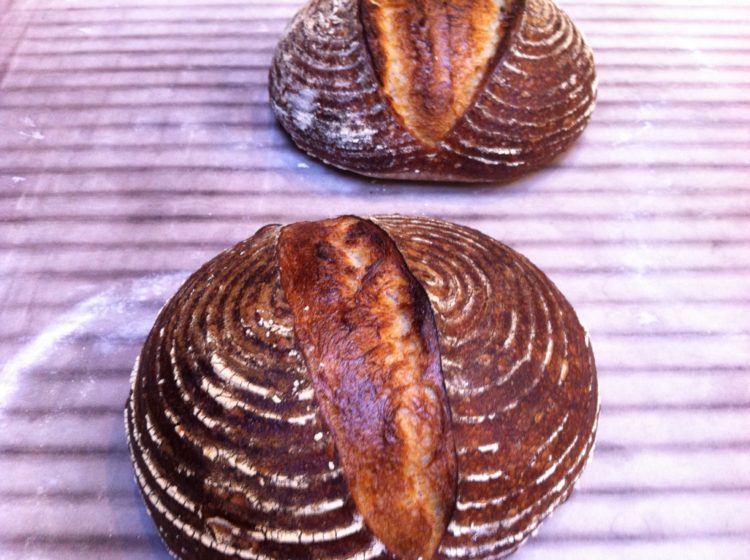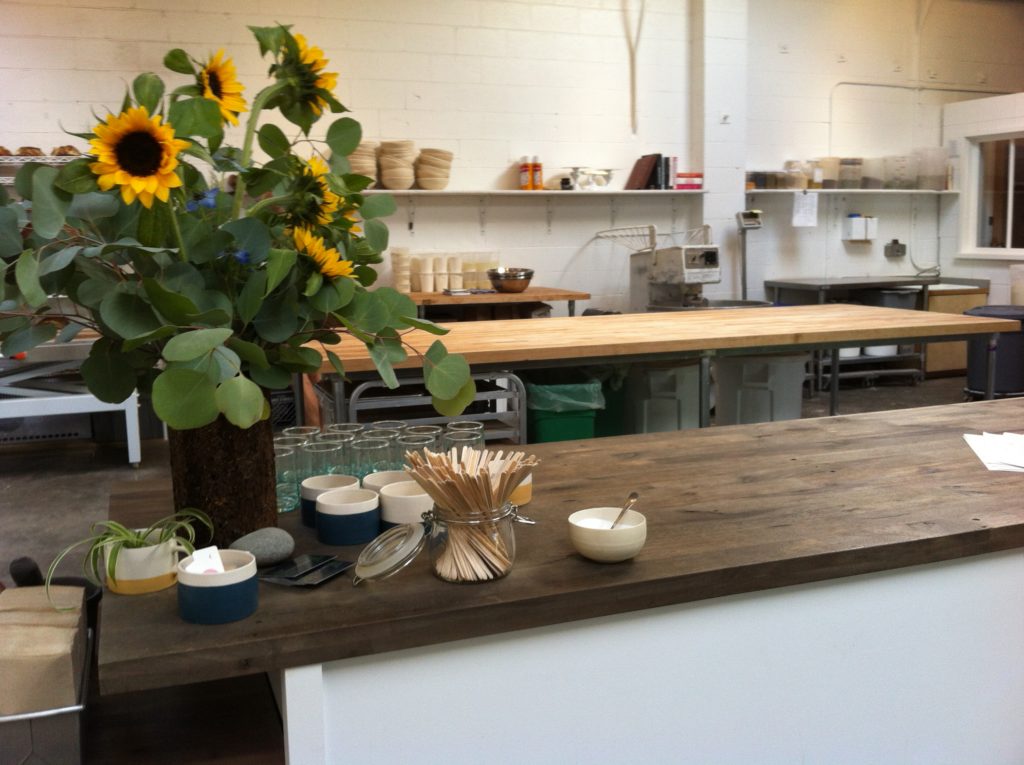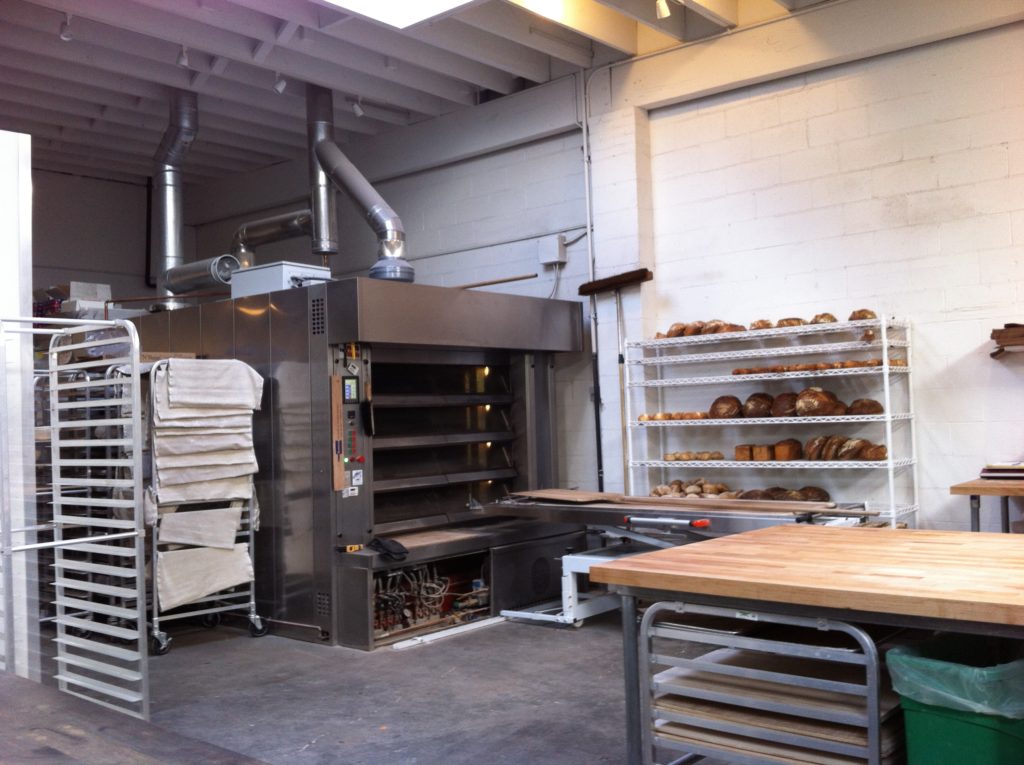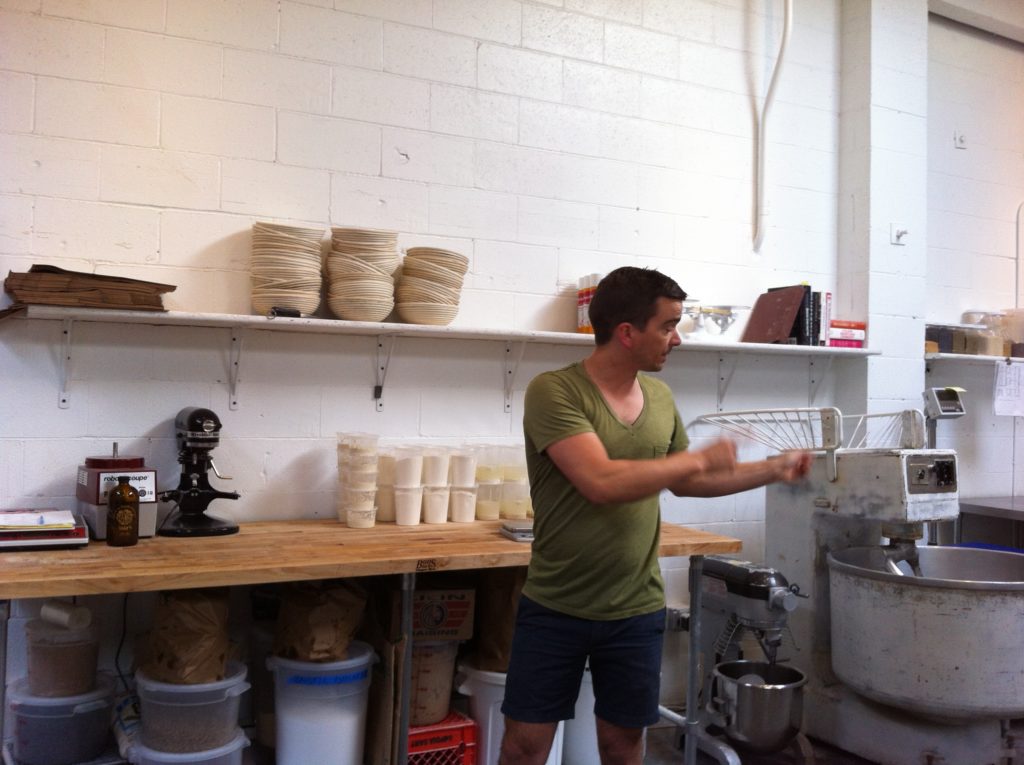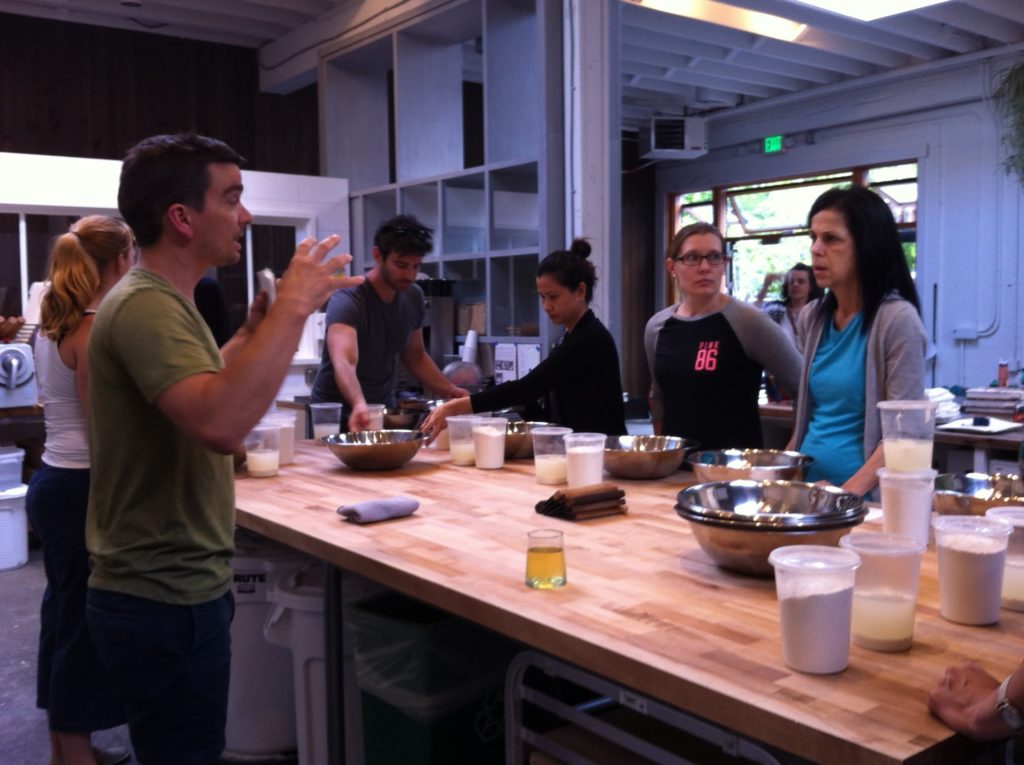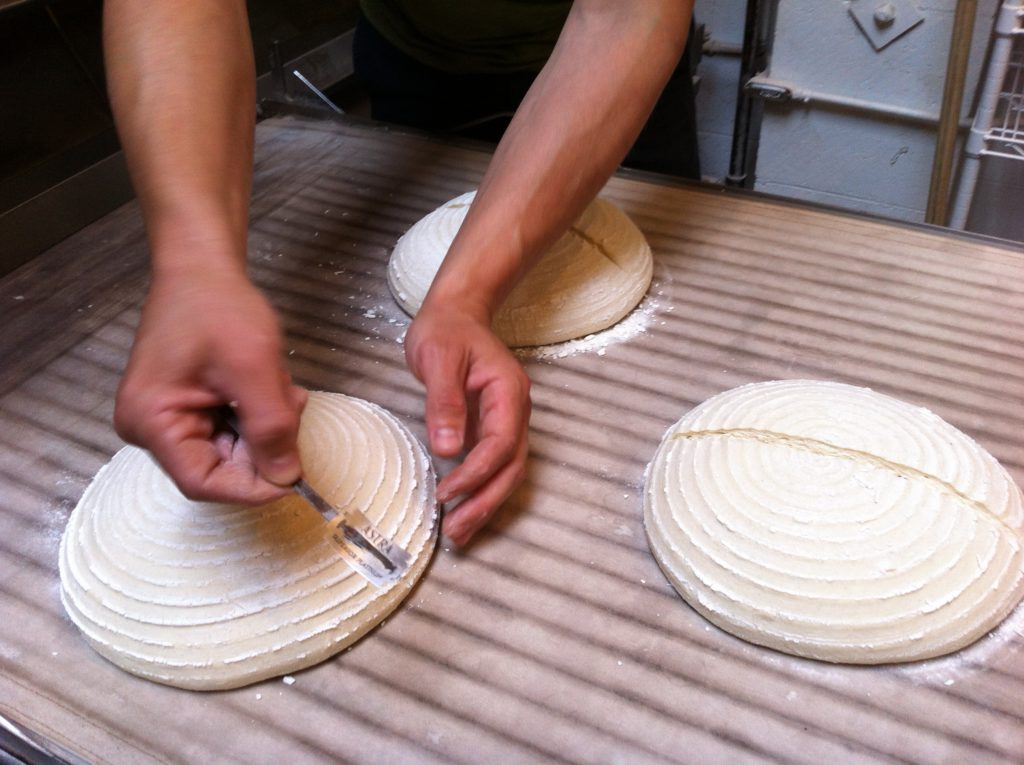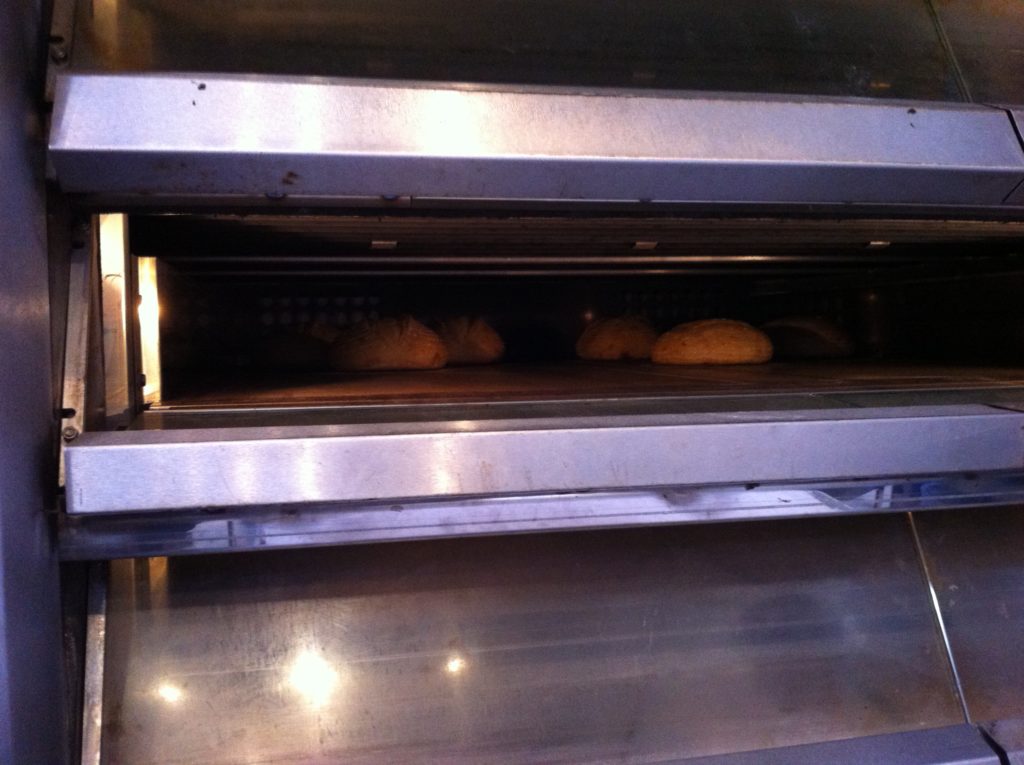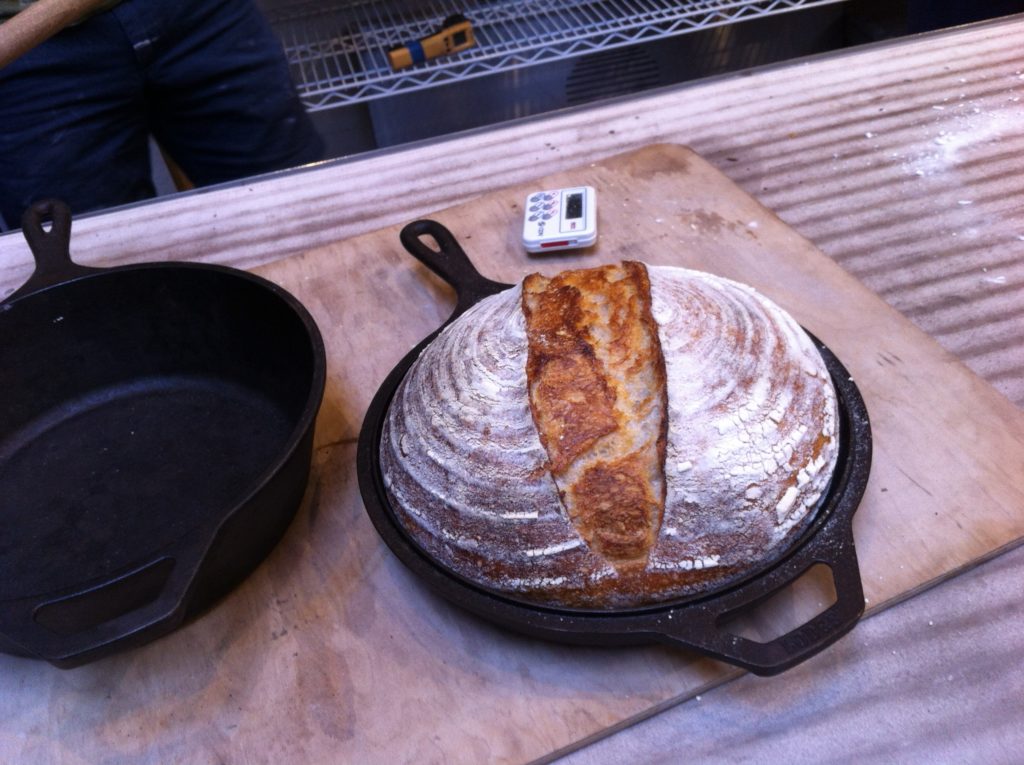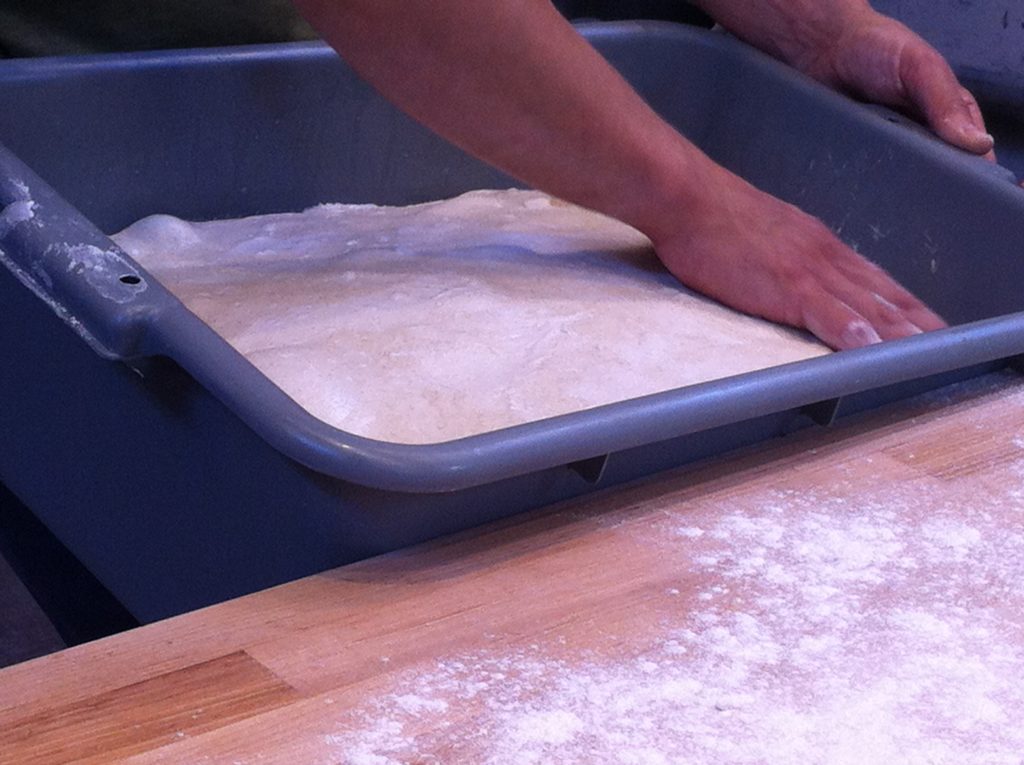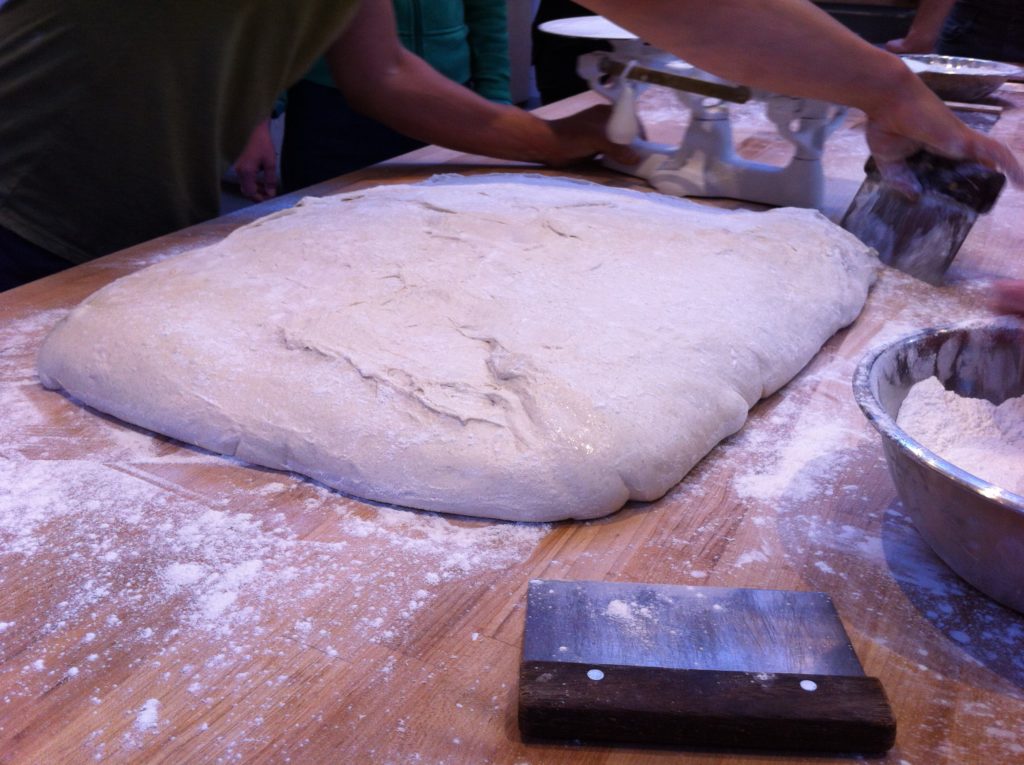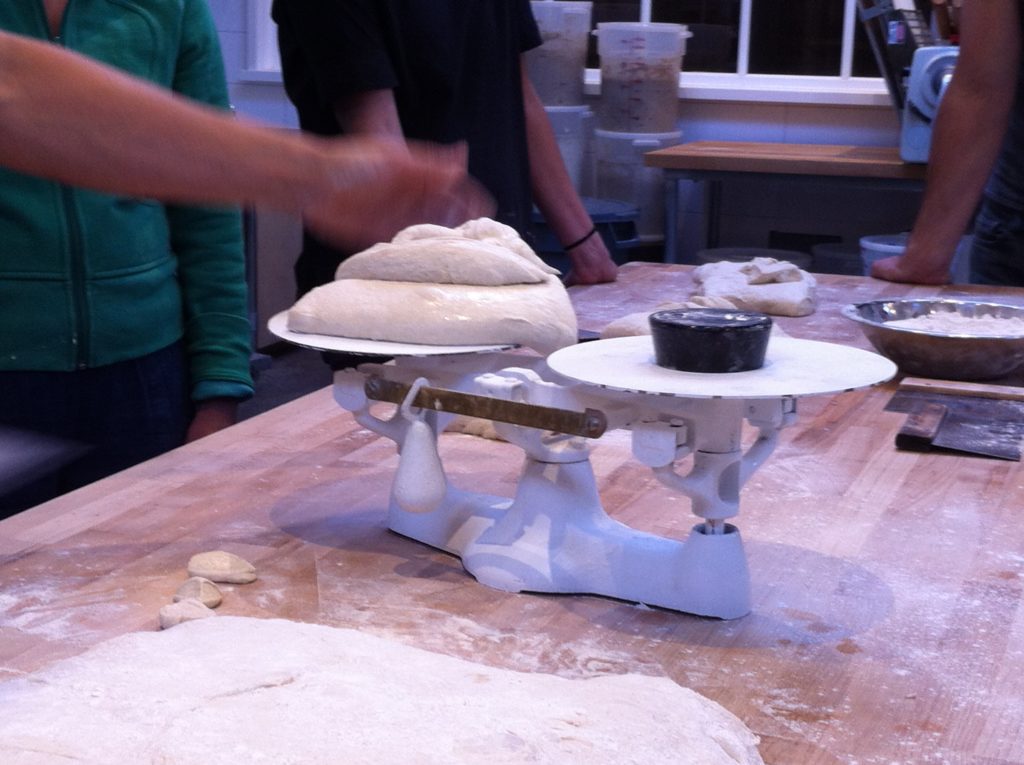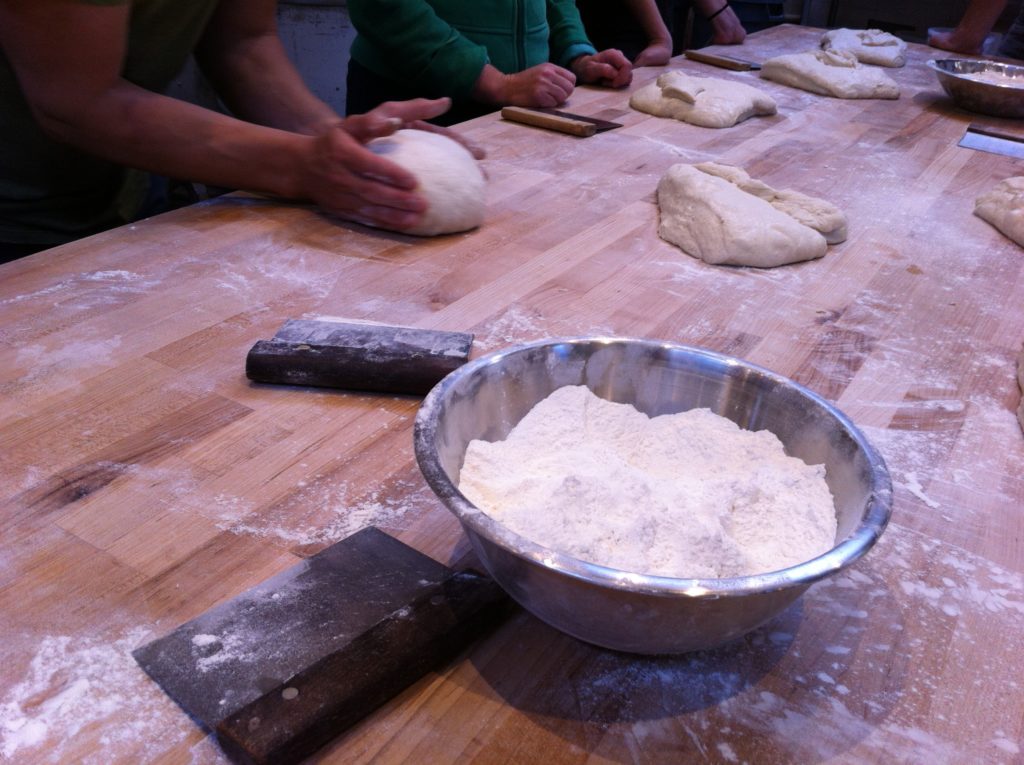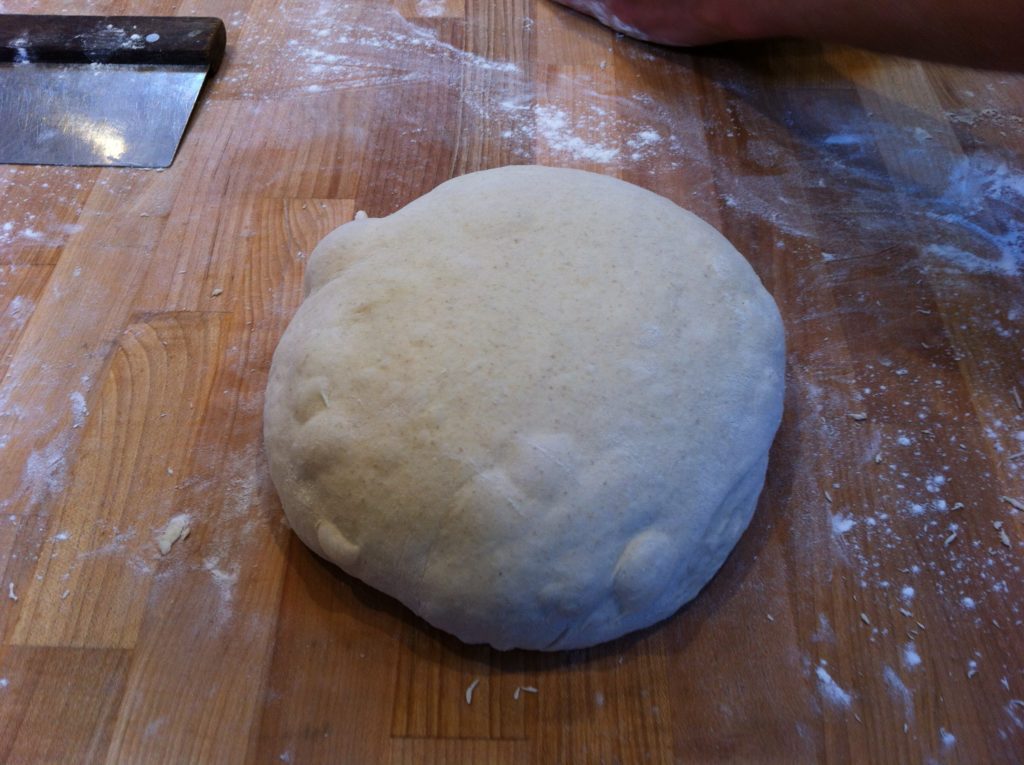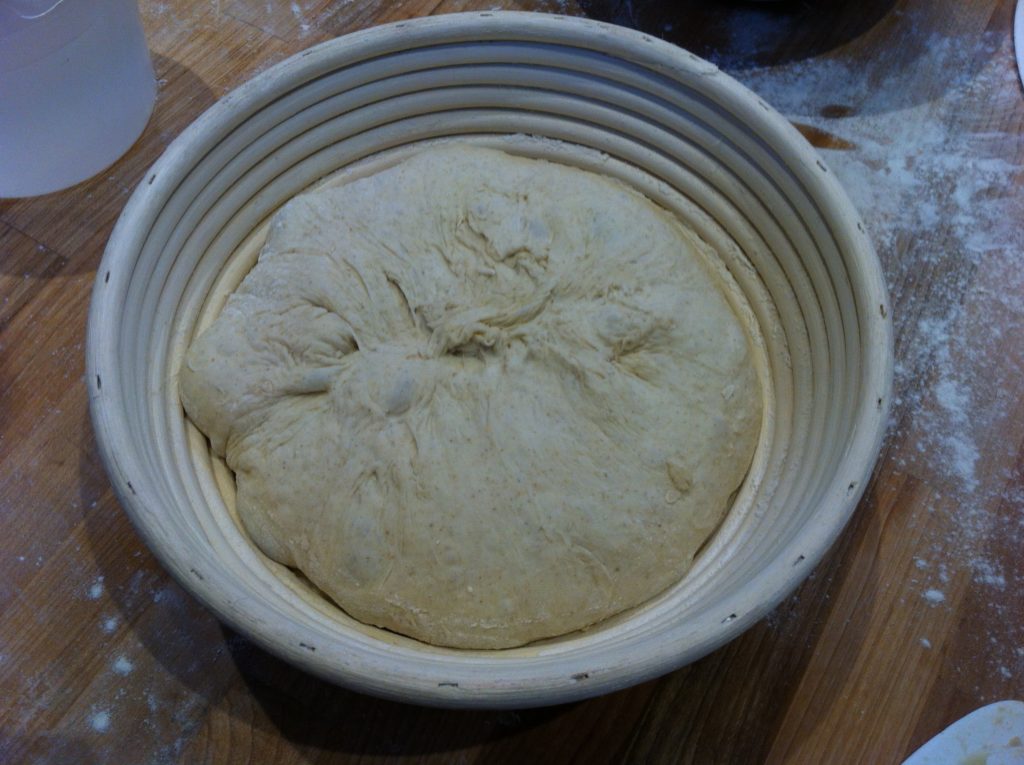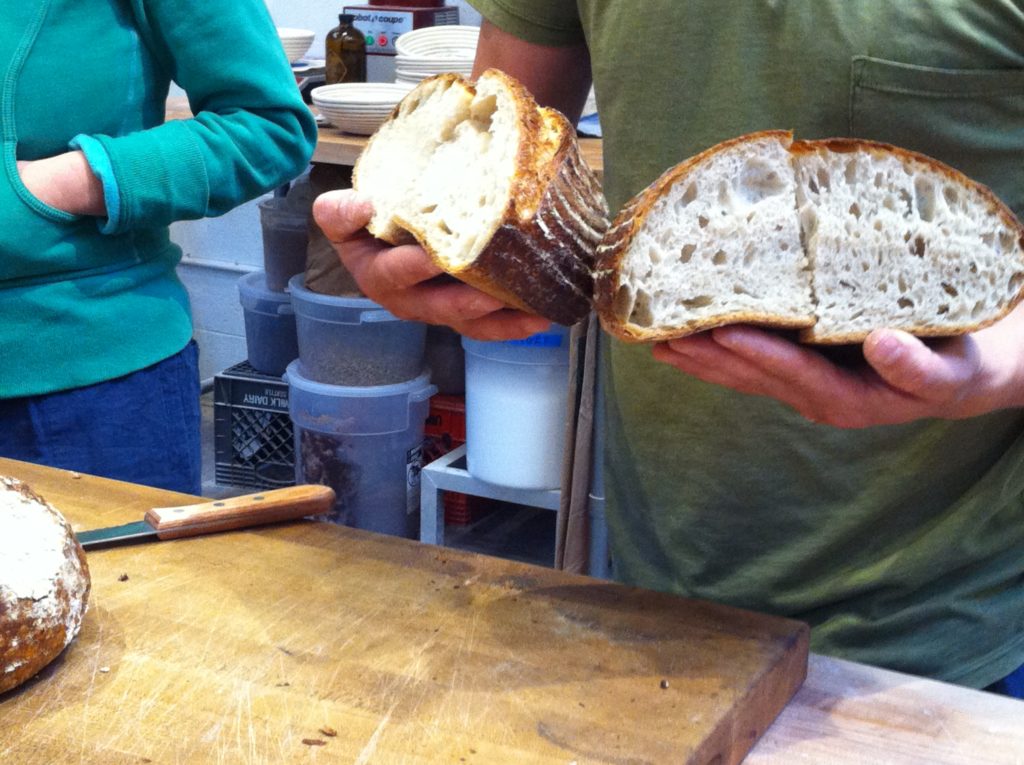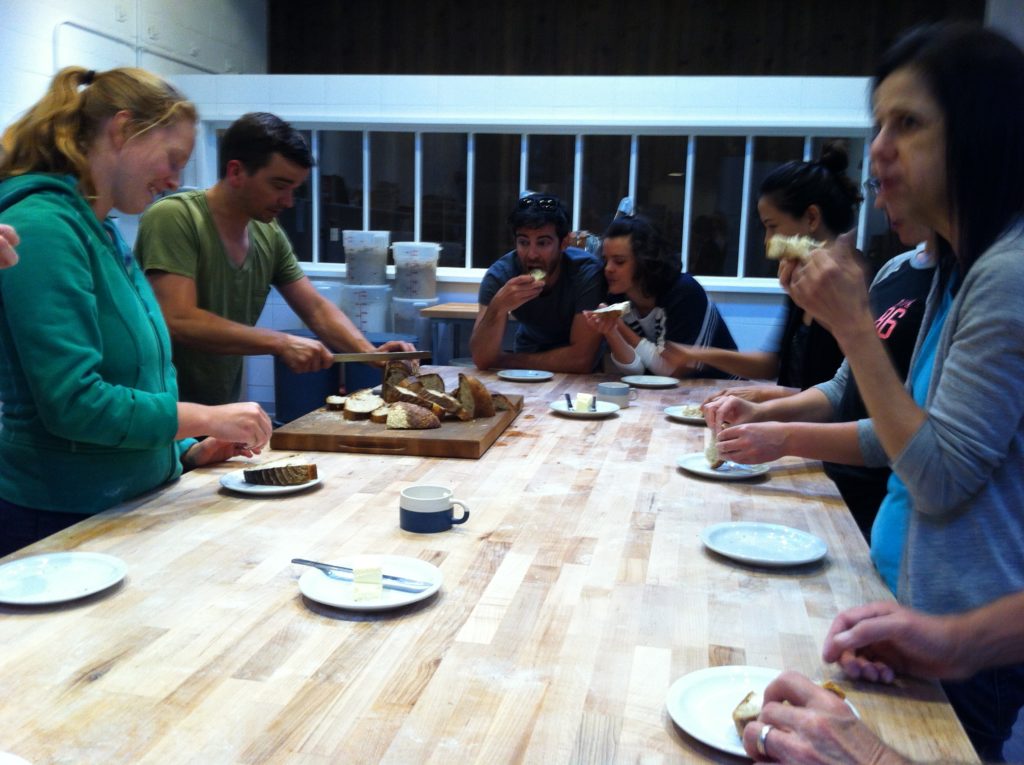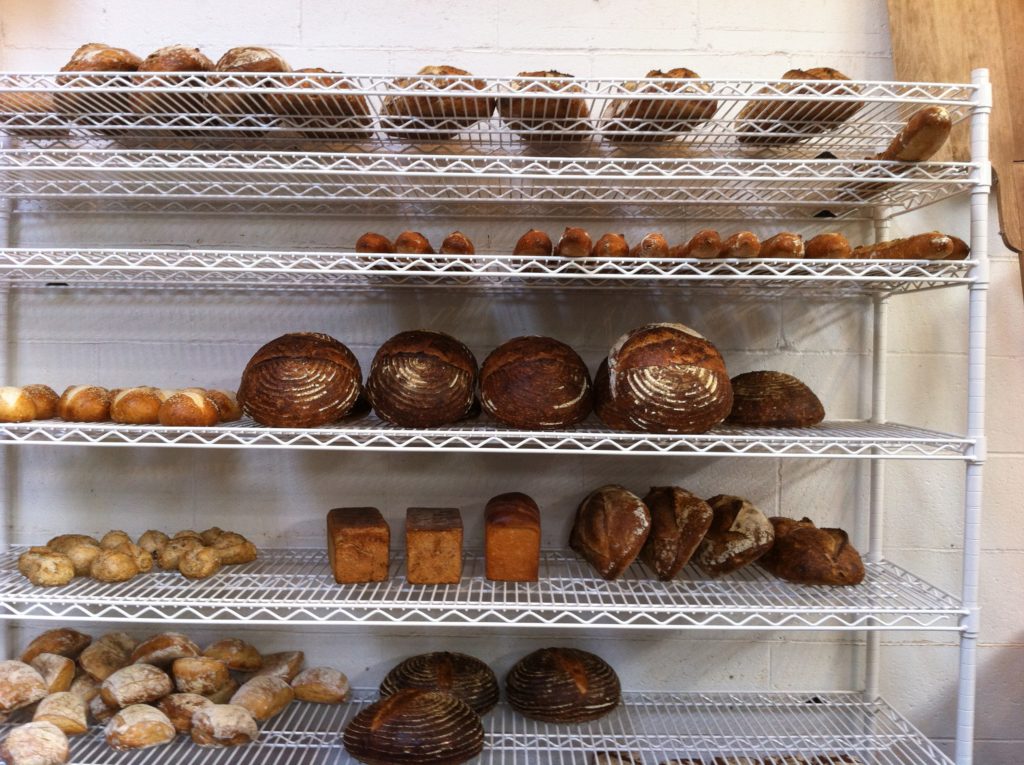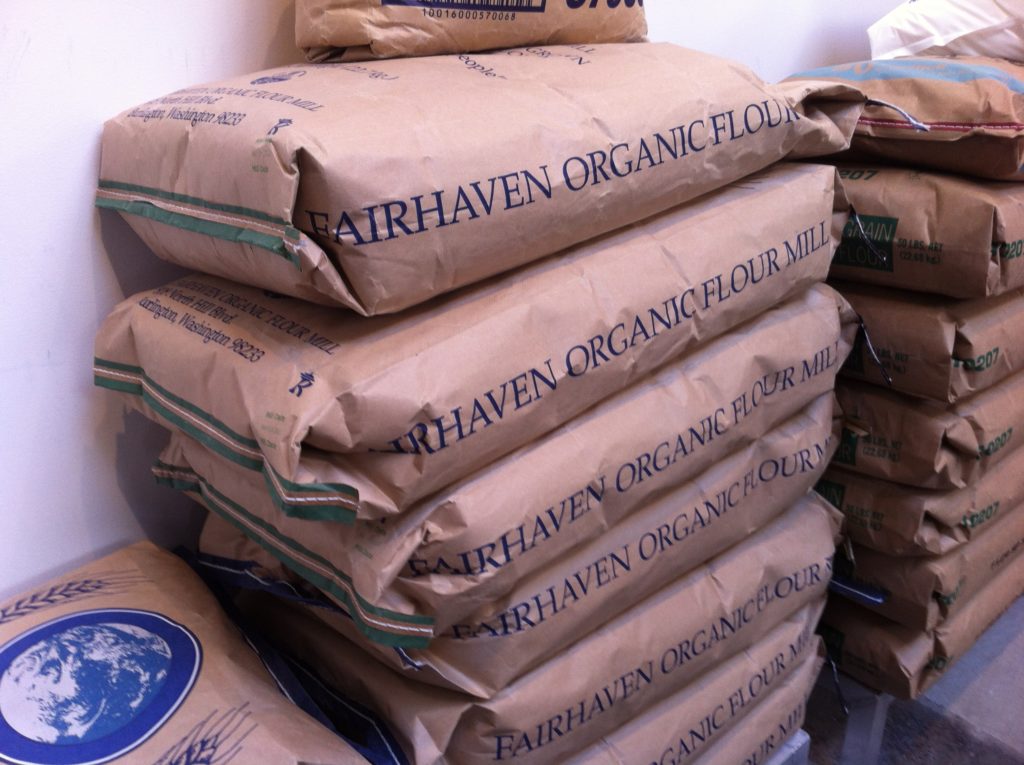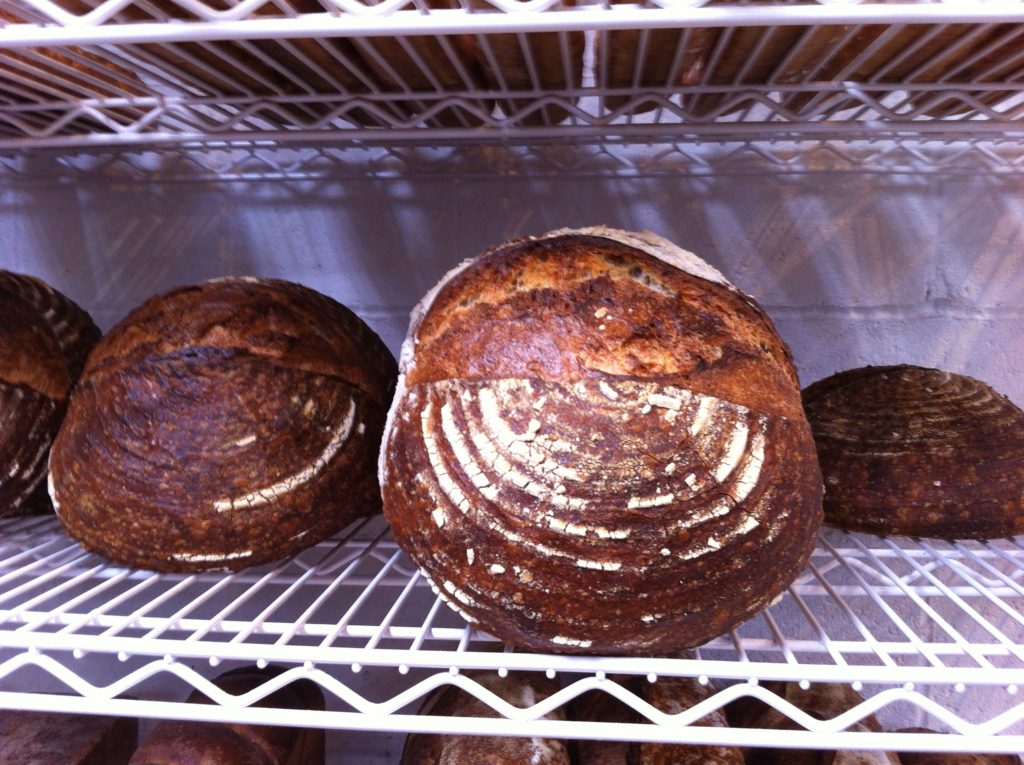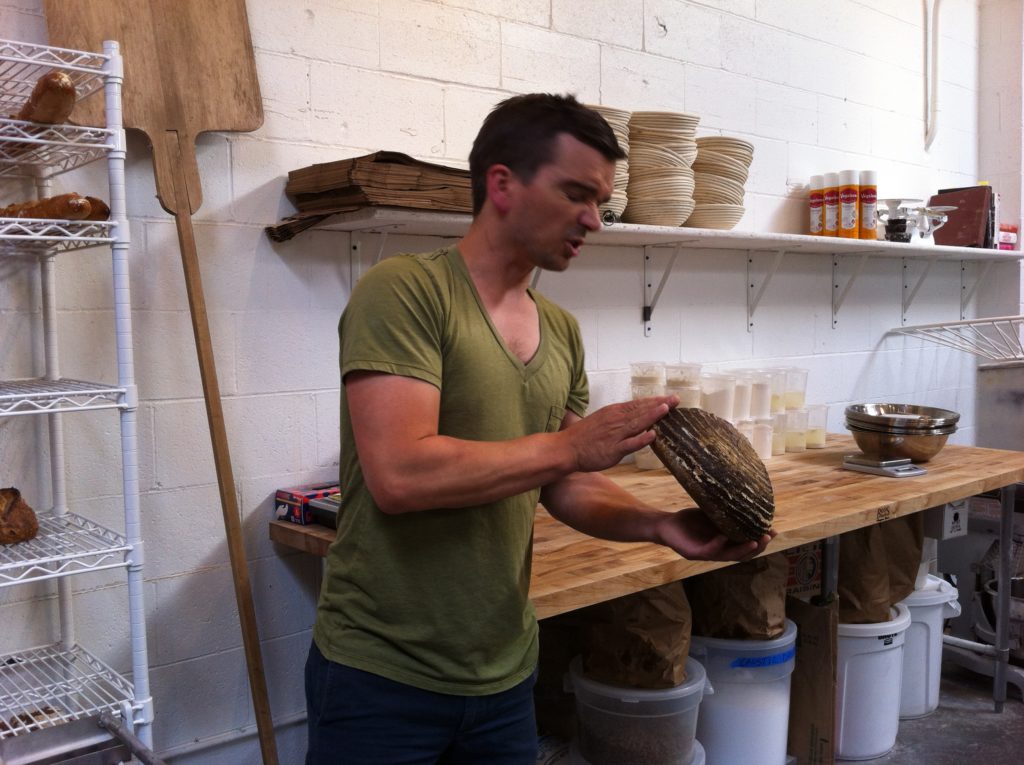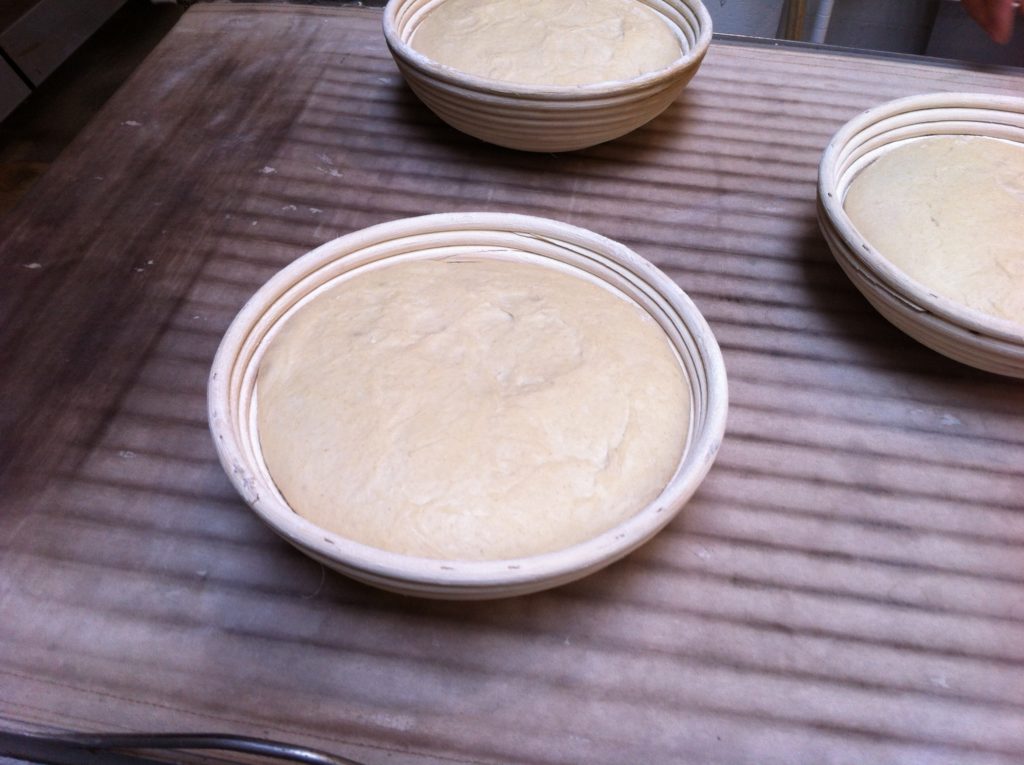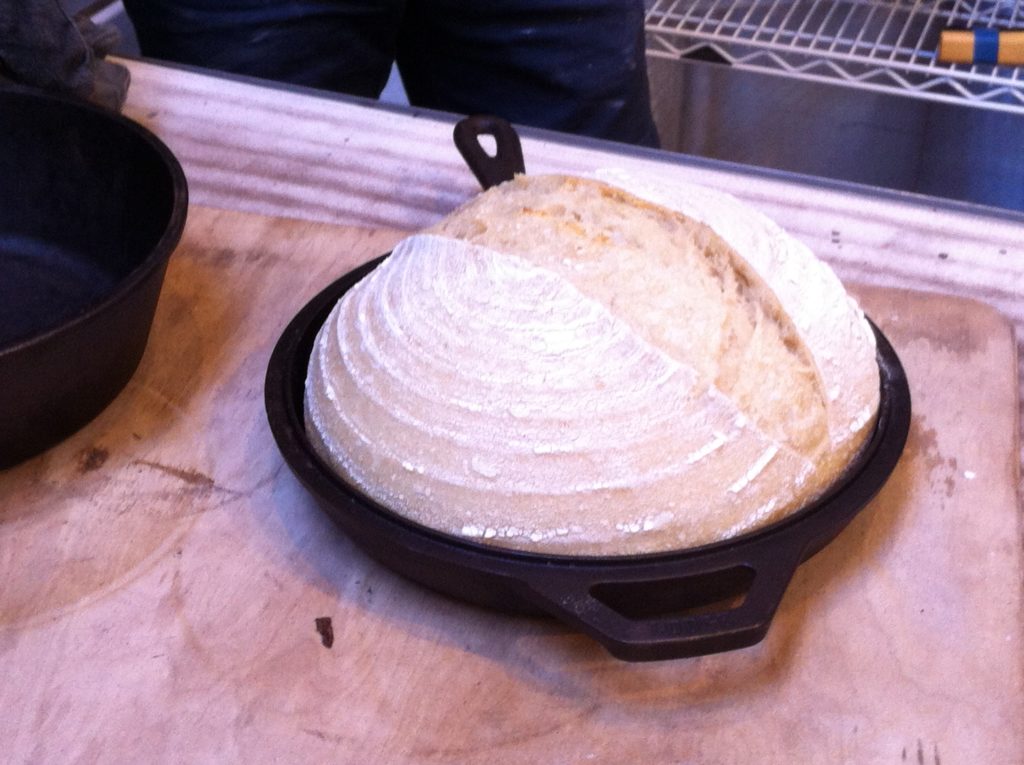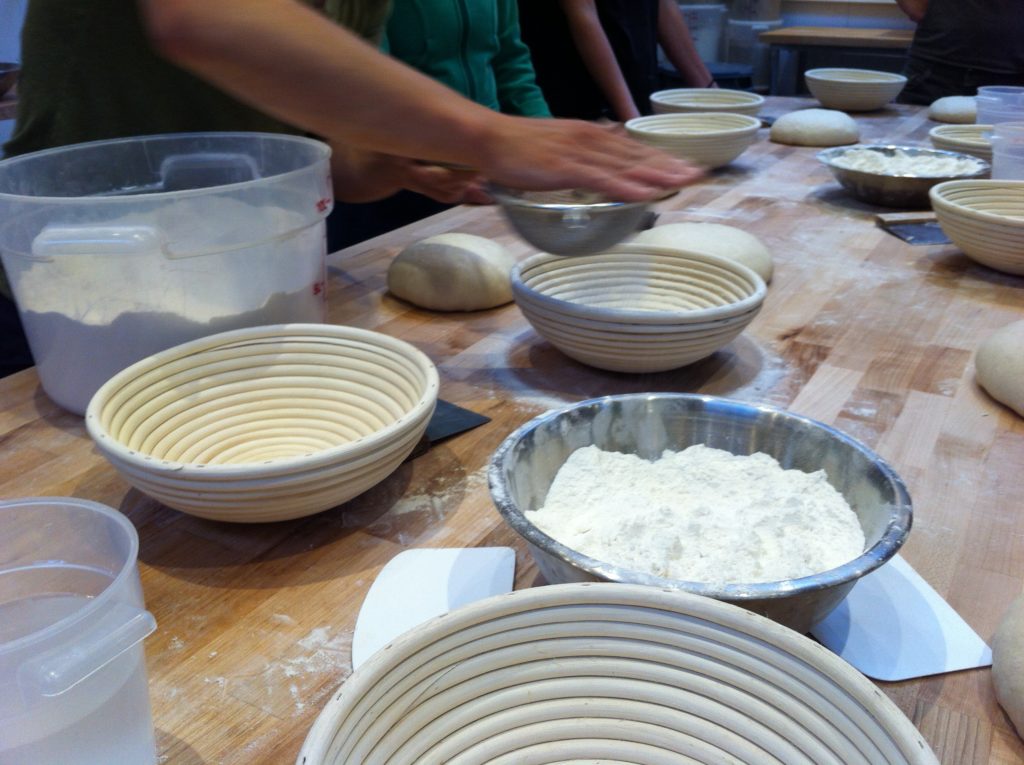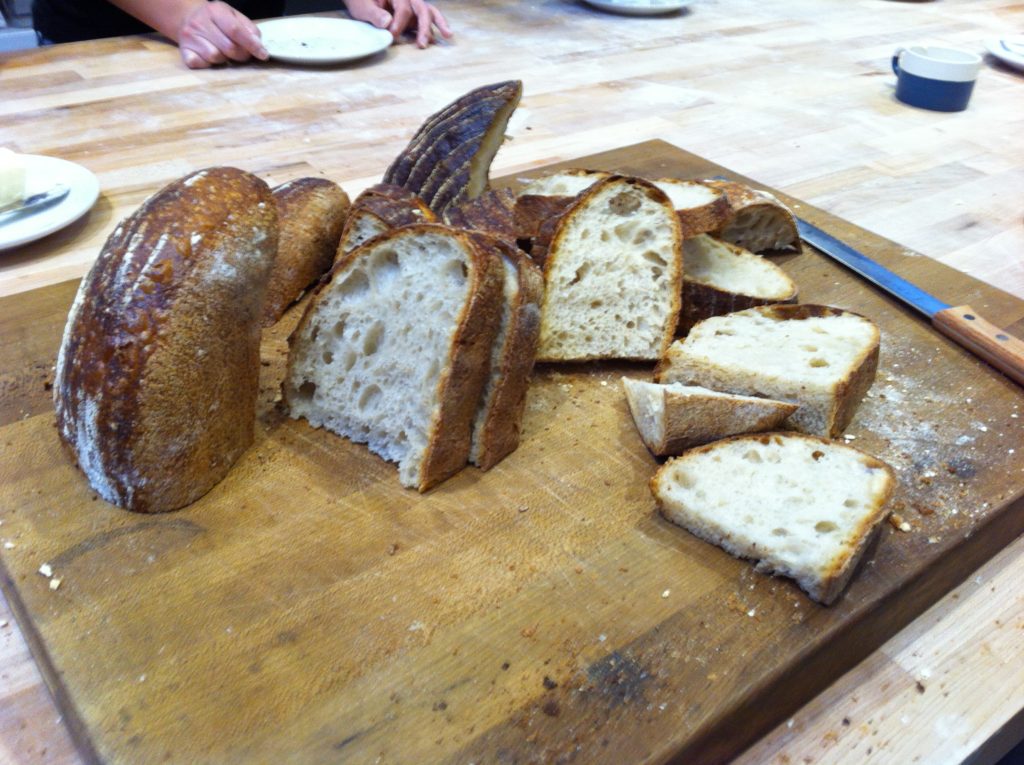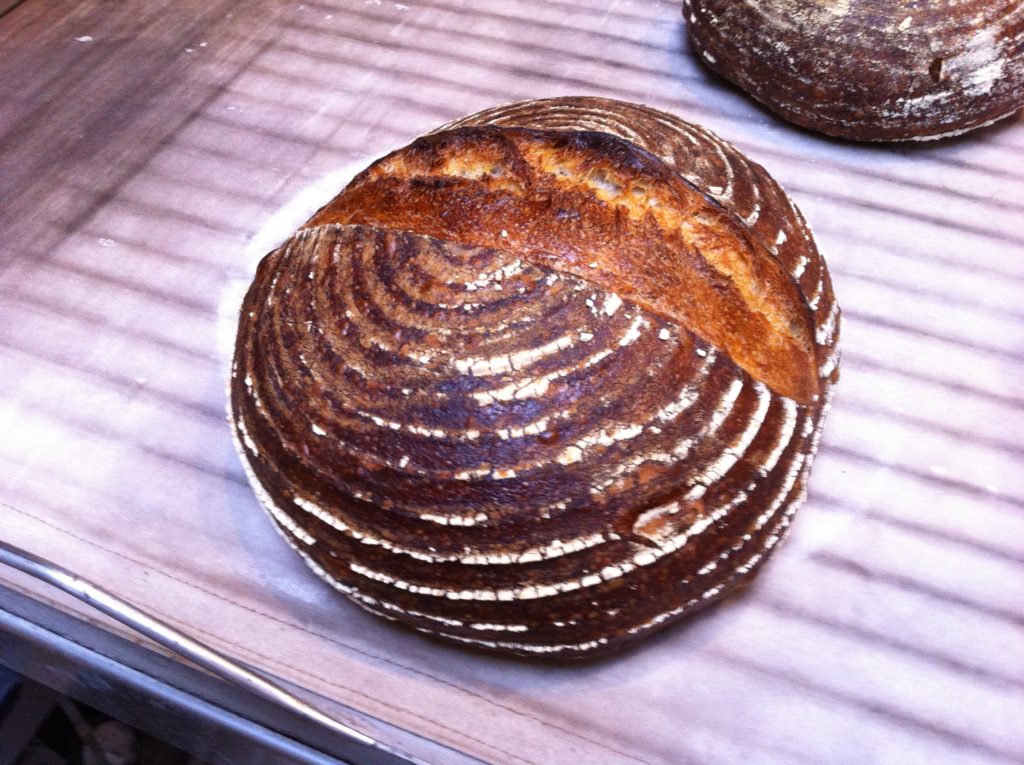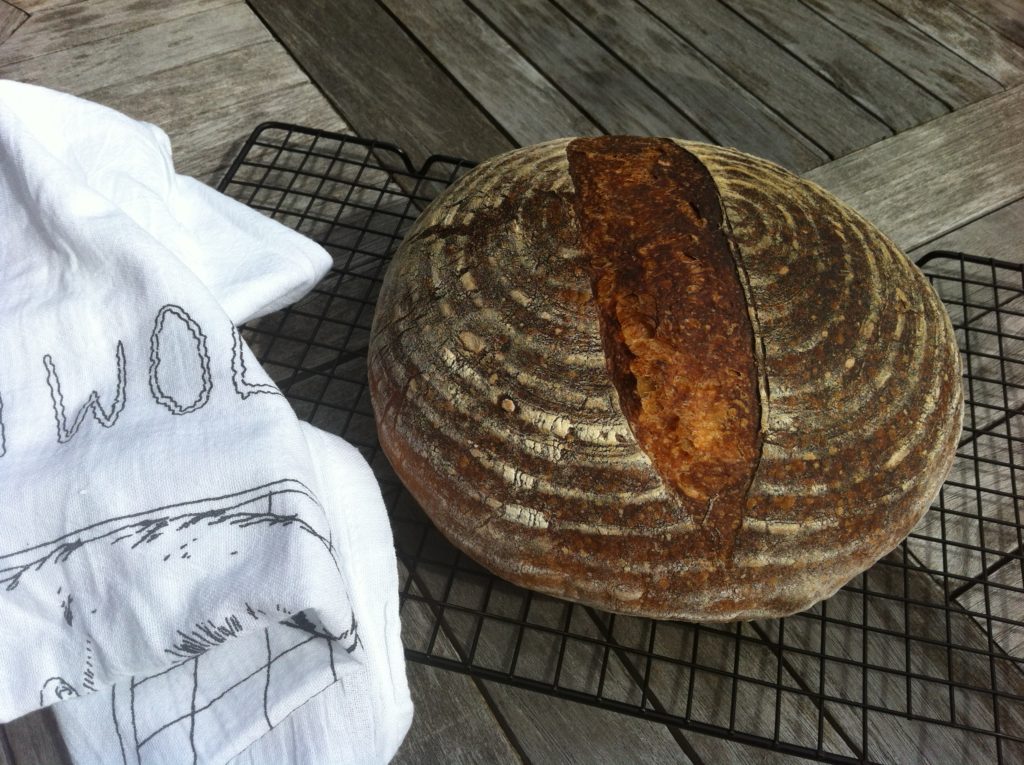The signs were all there for some time: The article I read about them, their tasty baguette, which I bought in the Little Lago Grocer close to my school, and the crispy but not too buttery chocolate croissant – hiding bittersweet Valrhona chocolate – I ate from the selection of their morning pastries a friend of mine brought to a school meeting one day.
Then I realized that their bakery was quite close to my house. It was time for a visit. I bought a beautiful loaf of sourdough bread. I was totally hooked! I liked everything: Their story, the taste of their pastries, and the taste of their bread. Then I saw on Book Larder’s webpage (Seattle’s only cookbook store) that they were partnering with Sea Wolf bakery offering a hands-on class. Kit & Jesse Schumann: Sourdough 101 with the Sea Wolf Bakers. It was offered multiple times during the summer but it was selling out quickly. I knew I needed to get in soon.
On the last day of school, in the evening, I went to the class held at the Sea Wolf bakery!
The founders, brothers Kit & Jesse, after two and half years of baking out of borrowed kitchens around Seattle using cast iron pans, settled in this minimalist, modern, warehouse-like space in the Wallingford neighborhood. They opened Sea Wolf bakery, named after Jack London’s novel, in August of 2016. Besides baking, they also sell their killer pastries here (both sweet and savory), their incredible breads, and teach the key points of bread baking.
Tonight, Jesse was the teacher.
Jesse started the class by talking briefly about their history (how they did everything by hand), explained how their spiral mixer worked (they don’t mix the dough by hand anymore), talked about the oven, and let us know how proud they are of their bread. Mentioned that the way how they make sourdough is their way of doing it. Then the real thing started. I was quite excited to get my hands “dirty.” Jesse taught the basics of the 6-hour long bread making process in two hours. How was he able to accomplish this? He had liquid sourdough starters prepared for us, flours pre-measured in jars, risen dough that we could shape, and shaped breads in proofing baskets ready to be baked.
We all worked on the beautiful big work table, hand mixed our liquid sourdough starter (levain) with the white and barley flours and a little salt in big stainless-steel mixing bowls, then let it rest. While our dough was resting, Jesse talked about the quality of their breads displayed on the cooling rack by the oven and answered our questions.
He scored and baked three prepared loaves for us to see what a fully proofed loaf looks like before it goes into the oven. We could peek into the oven throughout the baking – quite exciting! Baking was done in one hour. We went back a few times to our dough to fold it during the bulk fermentation.
Jesse later brought out a big bin of proofed bulk fermented dough, which he divided into one kilogram chunks using an old-fashioned scale. He recommended, however, that we use a digital scale at home.
We learned to shape our dough into a boule (round) – I was a little bit unsure of myself at the beginning, – then we placed it into a lightly floured wicker proofing basket (with seem up), which we could take home to bake.
Finally, Jesse sliced a few loaves of bread for us to taste. Believe me, their sourdough bread is incredible (and well worth the price)! We also got our own sourdough starter and the recipe for Sea Wolf’s white sourdough bread. We could even take home the dough (carefully wrapped in plastic) we mixed together and folded during class.
And as an extra bonus, we were encouraged to take home samples of bread, baguette, morning pastry, buns, and ciabatta. Oh, and a lovely white Sea Wolf tea towel.
The following morning, I baked the bread I brought home from the bakery. Besides the fact that the scoring wasn’t as deep as I would have liked, the taste of the bread was amazing! What is the next step for me? Mix, proof, shape, and bake my own bread using the Sea Wolf starter remembering Jesse’s recommendations for flour, salt, water, tools, and the little tricks of bread making.
Thank you, Book Larder, for offering this wonderful class, and thank you, Jesse, for being such a great baker and sharing your knowledge with us! I recommend your bread to anyone who loves a good bread and the class to anyone who is interested in bread making.
Már régóta ott voltak a jelek: a cikk, amit olvastam róluk, az ízletes baguette, amit az iskolámhoz közeli Little Lago boltban vásároltam, és a ropogós, de nem túl vajas csokoládés croissant (benne kesernyés Valrhona csokoládéval), amit egyik nap a kolléganőm hozott a reggeli gyűlésre. Aztán rájöttem, hogy a pékségük nagyon közel van hozzánk. Ideje volt ellátogatni oda. Vettem egy gyönyörű kovászos kenyeret, amitől teljesen oda voltam. Mindent imádtam e pékséggel kapcsolatban: a történetüket, a péksüteményüket, a kenyereik ízét. Aztán láttam a Book Larder weboldalán (az egyetlen üzlet Seattle-ben, ami csak szakácskönyvet árusít), hogy a Sea Wolf pékséggel közösen házi kenyérsütő tanfolyamot hirdetnek Kit & Jesse Schumann: Sourdough 101 with the Sea Wolf Bakers címen. A tanfolyam a nyár folyamán több alkalommal is indult, de láttam, hogy az időpontok gyorsan fogynak. Tudtam, sürgősen be kell jutnom az egyikre.
Az év utolsó tanítási napjának estéjén vettem részt a Sea Wolf pékségben tartott gyakorlati tanfolyamon!
Az alapító testvérek, Kit és Jesse, miután két és fél évig Seattle környékén, bérelt konyhákban, öntöttvas edényekben sütötték a kenyereket, ebben a minimalista, modern, raktárszerű helyiségben találtak otthonra a Wallingford városrészben. Pékségüket Jack London The Sea Wolf (Tengeri farkas) című regénye után nevezték el, s 2016 augusztusában nyitották meg. Nemcsak sütnek, hanem árusítanak is itt, s tanítják a kenyérsütés legfontosabb elemeit.
Ma este Jesse volt az oktató.
Azzal kezdte, hogy röviden szólt a pékség történetéről (miként csináltak a kezdeti időszakban mindent kézzel), elmagyarázta, hogyan működik a spirálos dagasztógép (már nem kézzel keverik össze a tésztát), beszélt a sütőről, és tudatta velünk, hogy mennyire büszkék a kenyerükre. Megemlítette, hogy ahogyan ők készítik a kovászos kenyeret, az az ő sajátos interpretáiójuk. Ezután elkezdődött a gyakorlati oktatás. Nagyon izgatott voltam, hogy végre „bepiszkíthatom” a kezem. A hat órás kovászos kenyérkészítés lépéseit Jesse két órába sűrítette bele. Hogyan tudta ezt megvalósítani? Előre elkészítette a kovászt, kimérte a lisztet, bedagasztotta a formázásra alkalmas tésztát, és a szakajtókban kenyerek várták a sütést.
A gyönyörű nagy munkaasztalon dolgoztunk. Kézzel összekevertük a folyékony kovászt a fehér- és az árpa liszttel egy rozsdamentes acélból készült keverőtálban, aztán hagytuk pihenni. Miközben érlelődött a tészta, Jesse beszélt a kenyerük minőségéről és válaszolt a kérdéseinkre.
A három, előre elkészített kenyér tetejére borotvával mintát rajzolt (ez esetben csak egy vágást) és megsütötte a kenyereket. Láthattuk, hogyan néz ki a tökéletesen bedagasztott kenyér, mielőtt bemenne a sütőbe. Sütés közben a sütőbe is bekukkanthattunk – izgalmas volt! A kenyerek egy óra alatt sültek meg. Néhány alkalommal visszatértünk az érlelődő tésztánkhoz, hogy áthajtogassuk.
Jesse később egy nagy műanyag edényből az asztalra tette az erjesztett tésztát, amit 1kg-os darabokra vágott (régimódi kétkarú mérleget használt). Azt tanácsolta, hogy mi otthon használjunk digitális mérleget.
Megtanultuk, hogyan formázzuk kerekre a tésztát – egy kicsit bizonytalan voltam magamban az elején –, aztán a cipót egy kilisztezett szakajtóba tettük (illesztéssel felfelé fordítva), amit aztán hazahozhattunk a tanfolyamról.
Végül Jesse felszeletelt néhány kenyeret, s következett a kóstoló. Hidd el, hihetetlenül finom a kovászos kenyerük (és megéri az árát)! Ezután mindenki kapott egy kis dobozt, benne kovásszal, továbbá a Sea Wolf pékség kovászos kenyerének receptjét. Hazavihettük azt a tésztát is (gondosan folpackba csomagolva), amit korábban mi kevertünk össze. Extra bónuszként Jesse arra ösztönzött mindnyájunkat, hogy vigyünk haza pár kenyeret, baguettet, croissantot, zsemlyét, ciabattát. Ó, és egy csinos, tengeri farkast ábrázoló konyharuhát is kaptunk.
Itthon másnap reggel megsütöttem a szakajtóban hazahozott kenyeret. A tetején a vágás nem lett olyan mély, mint ahogy szerettem volna, de a kenyér íze, igen, az elképesztően finom volt! S hogy ezután mi a következő lépés számomra? Kitűnő házi kenyeret sütni a Sea Wolf pékség kovászával, emlékezve a liszttel, sóval, vízzel, sütési eszközzökkel kapcsolatos tippekre.
Köszönet a Book Larder könyvesboltnak, hogy meghirdette ezt a tanulási lehetőséget. S főleg köszönet Jessenek, hogy megosztotta velünk a tudását! Mindenkinek, aki szereti a jó kenyeret, szívből ajánlom a kenyerüket, s azoknak, akik érdeklődnek a kenyérkészítés iránt, ajánlom ezt a tanfolyamot.
